Nikon D3500 Review
The cheapest way to get a ‘proper’ camera
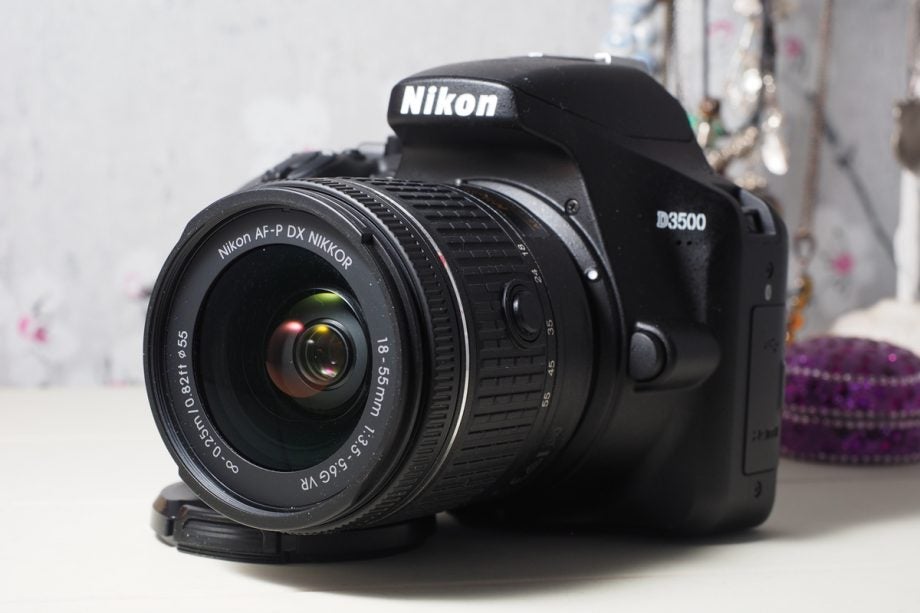
Verdict
What is the Nikon D3500?
The Nikon D3500 is an entry-level DSLR for beginners. It’s a modest upgrade over the popular D3400, with the same 24.2 megapixel resolution but a redesigned body and improved battery life.
It’s enough to keep the D3500 fresh in a very competitive space, where smartphone upgraders, novices and students are looking for their first affordable ‘proper’ camera.
Arguments still rage over DSLRs versus mirrorless cameras, but the fact is you won’t find a current mirrorless camera with a viewfinder at this price. The D3500’s only real competition comes from Canon, with its low-cost EOS 2000D and even cheaper EOS 4000D. And in most respects, it’s the better choice for most people.
Related: Best DSLRs
Nikon D3500 – Design and features
Being a DSLR, the Nikon D3500 has a chunkier body than a mirrorless camera because it needs to be thick enough to incorporate a mirror for its optical viewfinder.
However, the D3500 is commendably small for a DSLR. It’s also a fraction lighter than the old D3400, but with a thicker grip that makes it a bit more wieldy with bigger lenses.
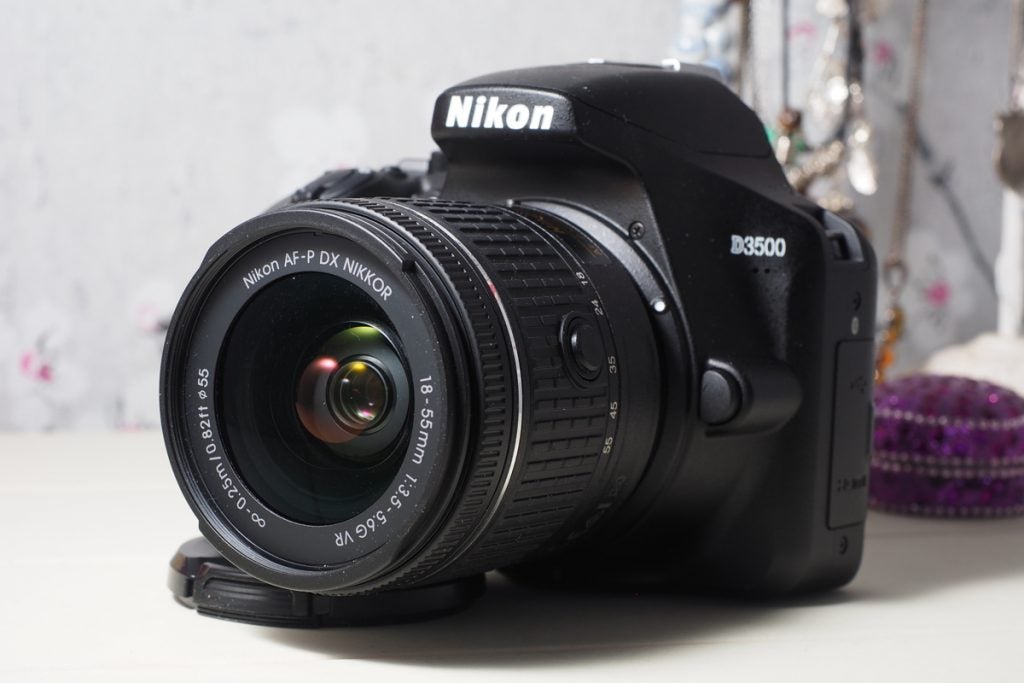
The D3500 may be bigger than a mirrorless camera, but it’s impressively small for a DSLR
It’s designed to be beginner friendly, but that doesn’t mean its simplistic. As well as full auto and ‘Guide’ modes, the D3500 has the full set of program AE, aperture-priority, shutter-priority and manual modes you’d expect on a serious camera.
It doesn’t offer 4K video, but it can shoot continuously at 5 frames per second, which is very good for a camera in this price bracket. DSLRs are known to be much lighter on their batteries than mirrorless cameras, but the D3500’s claimed 1,550-shot battery life is little short of amazing. That’s about five times more than a similarly priced, if considerably smaller, mirrorless camera.
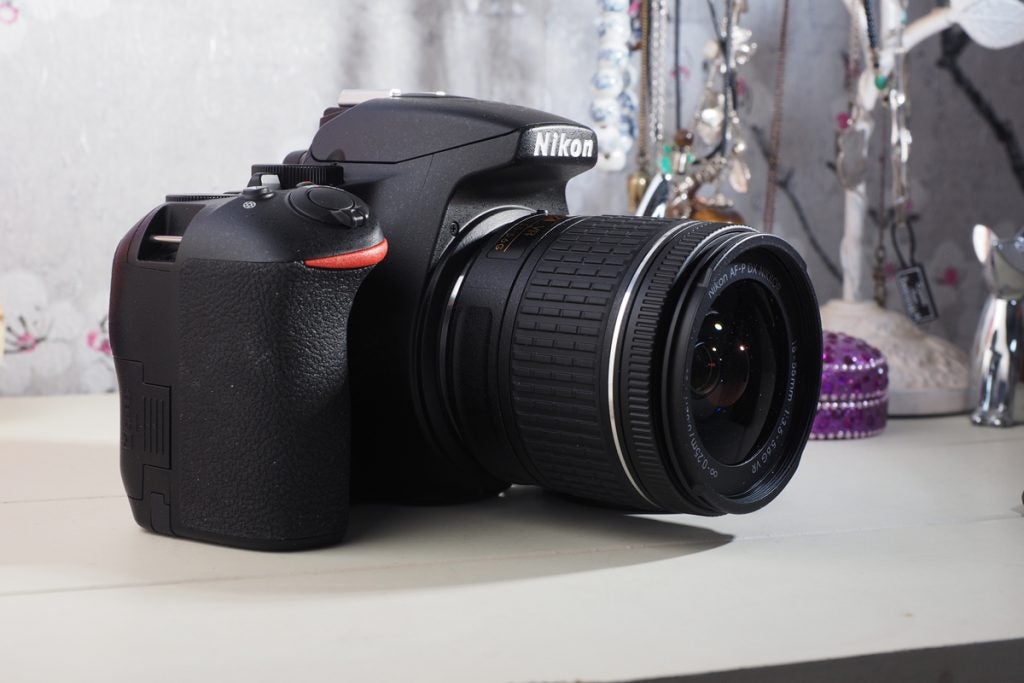
The D3500’s kit lens is retracting, which makes it a little more portable than its rivals
The D3500’s other interesting feature is its retracting 18-55mm AF-P kit lens. You press a button to ‘collapse’ the lens when it’s not in use and it does make the D3500 a little easier to carry around. The normal version of this lens has Nikon’s VR vibration reduction system built in – there is an even cheaper kit version that doesn’t, but it’s not worth the small saving in cost.
The 100-25,600 ISO range makes the D3500 pretty handy in low light and there’s also a pop-up flash, though it’s pretty weak and probably best kept for emergencies.
Related: Best travel cameras
Nikon D3500 – Screen and viewfinder
Like other DSLRs in this price range, the D3500 uses a ‘pentamirror’ design for its viewfinder rather than the more expensive ‘pentaprism’ design in more upmarket DSLRs.
This means the viewfinder coverage is 95% rather than 100%, so you might get objects appearing at the edges of the picture that you didn’t see when shooting, but that’s a minor point and otherwise the viewfinder is bright, crisp and clear.
Many people rave over how the electronic viewfinders in mirrorless cameras show you exactly what the camera’s sensor will capture, but that’s not entirely true and DSLR viewfinders are still hard to beat for outright naked-eye clarity.
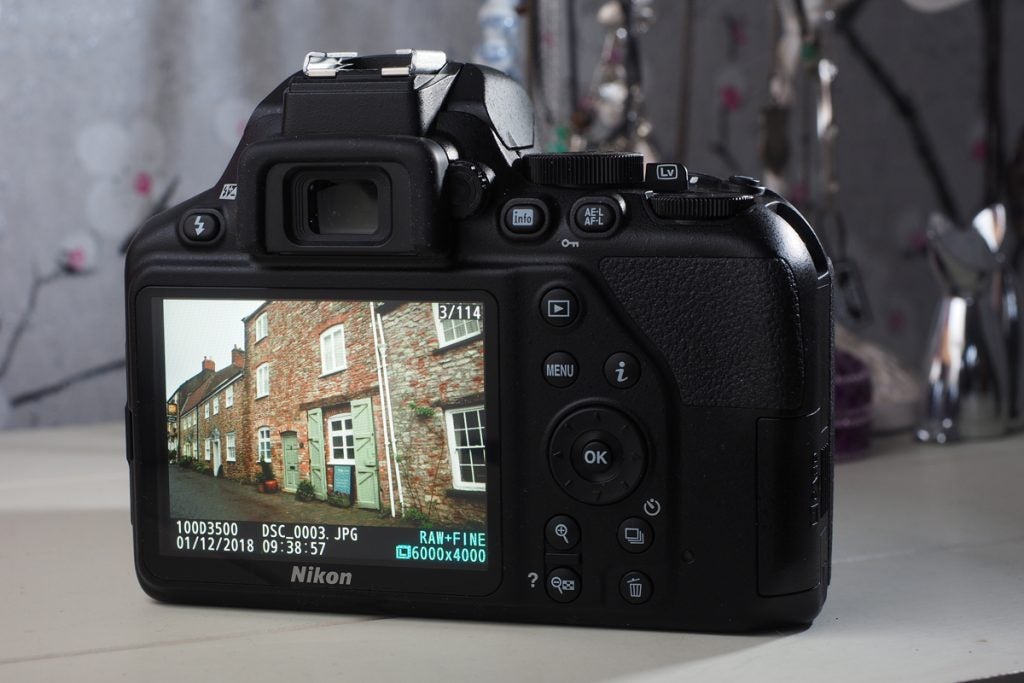
Optical viewfinders like the one of the D3500 are still hard to beat for clarity, even if they don’t let you preview creative effects.
The rear screen has a resolution of 921k dots, which is good at this price. It’s fixed in place, though, lacking even a tilting mechanism, and it’s not touch-sensitive either. That won’t be a problem for most users since you can change the settings perfectly easily with the camera’s physical buttons and dials – and it has a very good interactive ‘i’ screen for changing common settings quickly.
Related: Best vlogging cameras
Nikon D3500 – Performance
On paper, the D3500’s autofocus specifications are pretty basic. For viewfinder shooting there’s an 11-point autofocus system with a central cross-type sensor that’s more accurate. When you’re shooting in Live View mode using the rear screen, you only get contrast autofocus, not the hybrid phase-detection systems used on some Canon DSLRs and mirrorless cameras.
Contrast autofocus has a reputation for being precise but slow, especially in DSLRs. The D3500’s AF-P kit lens, however, turns this on its head. Nikon’s new stepper motor autofocus design isn’t just fast and quiet, it seems to work brilliantly in live view, delivering a snappy response you just wouldn’t expect from a low-cost DSLR.
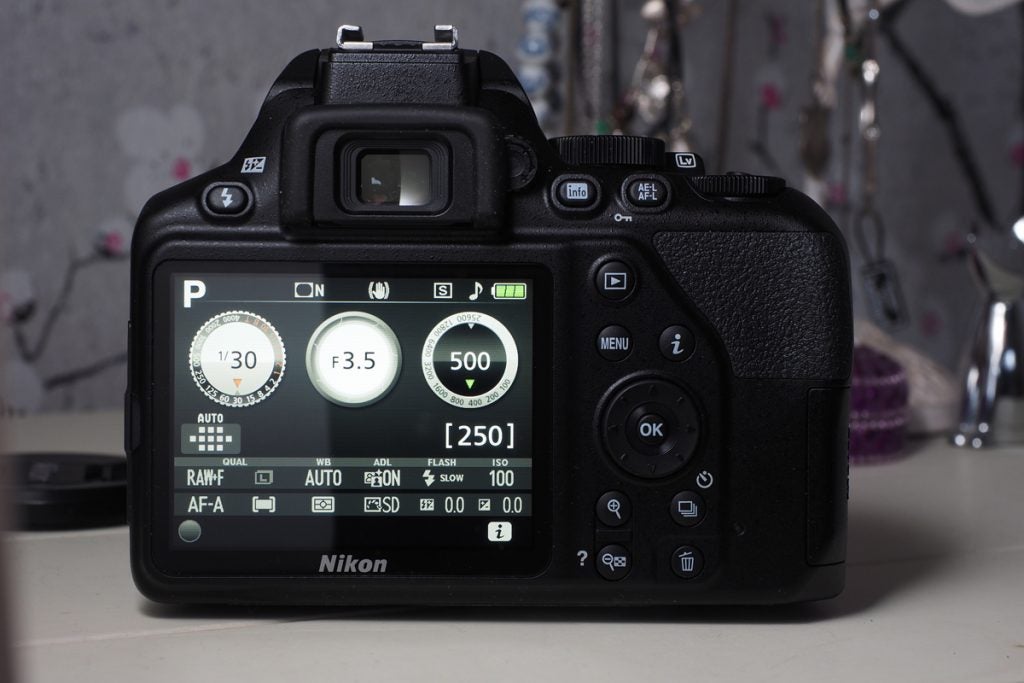
Nikon’s starter DSLR is pretty impressive in continuous shooting mode too. Its maximum frame rate is 5fps, and you’d have to go a fair way up the price scale to find a camera to beat this. It can capture up to 100 JPEG images in a single burst, or 16 Raw files. It’s no sports camera, but that’s still a pretty good set of figures for a budget model like this one.
The D3500 is a reminder that steady evolution can be just as valuable as headline-grabbing upgrades. The snappy AF-P lens, effective autofocus and reworked exterior have given the latest entry Nikon’s long-running series of entry-level cameras a fresh lease of life.
Related: Best compact camera
Nikon D3500 – Image quality and video
Nikon’s 24-megapixel APS-C sensor has always delivered good results in its other cameras in the past, and it’s the same here. It’s complemented by a good performance from the 18-55mm AF-P kit lens, which is sharper and more consistent across its focal range than you might expect.

The D3500’s metering system doesn’t over-expose highlights in high contrast situations like this.
The Matrix metering system works well and isn’t prone to overexposure in high-contrast lighting in the way that some cameras are. The auto white balance produced realistic looking colours in a range of indoor and outdoor conditions and Nikon’s Active D-Lighting system helps lift dark shadows when you’re shooting JPEGs.
You can also shoot Raw files with this camera, but they’re 12-bit files rather than the 14-bit raw files you get on more upmarket Nikons. In practice, it’s unlikely you will notice any difference, and even 12-bit raw files give a lot more processing leeway than in-camera JPEGs.

The camera’s kit lens is sharp across its whole focal range, which isn’t always the case with bundled lenses.
Perhaps it’s not surprising that you don’t get 4K video with a camera at this price point, but the D3500 can shoot full HD video at up to 60/50fps. The live view autofocus isn’t that fast, but the AF-P lens focuses smoothly and silently, and as long as you don’t expect it to keep up with fast, erratic movement it works pretty well.
Why buy the Nikon D3500?
Anyone looking to buy their first serious camera faces some tricky choices. Mirrorless cameras are probably closer in design and feel to the smartphones and compact cameras many have been using before, but they don’t have the hefty grip or sheer value for money of a budget DSLR like the Nikon D3500.
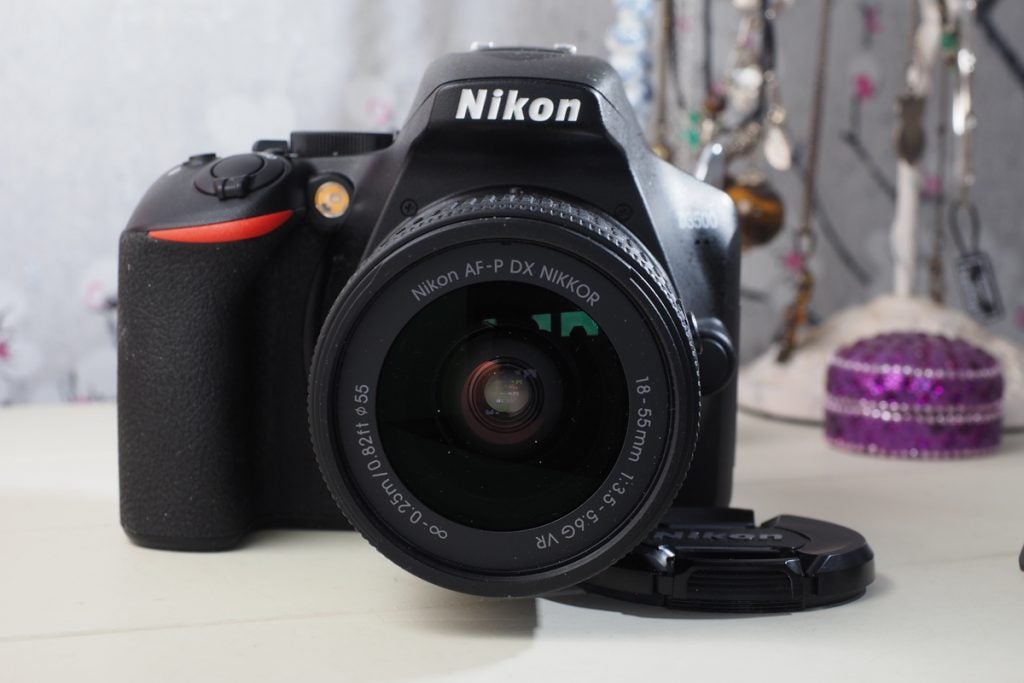
In fact, a lot of people might welcome the extra size and ‘grippability’ of a DSLR, especially if they go on to get larger lenses like telephoto zooms. And while many consider the mirror mechanism in a DSLR to be a clunky system that’s past its sell-by date, it does give a wonderfully crisp, lag-free viewfinder image.
The fact is, with the D3500 you get a lot of camera for a pretty low cost. It’s not only user-friendly for beginners, it has enough features and performance to stay with you for a long time as you learn about photography.
Verdict
The D3500 is a solid, well-specified entry-level DSLR that gives beginners good handling, great performance and real value for money.
Nikon D3500 – The Rivals
Canon EOS 2000D
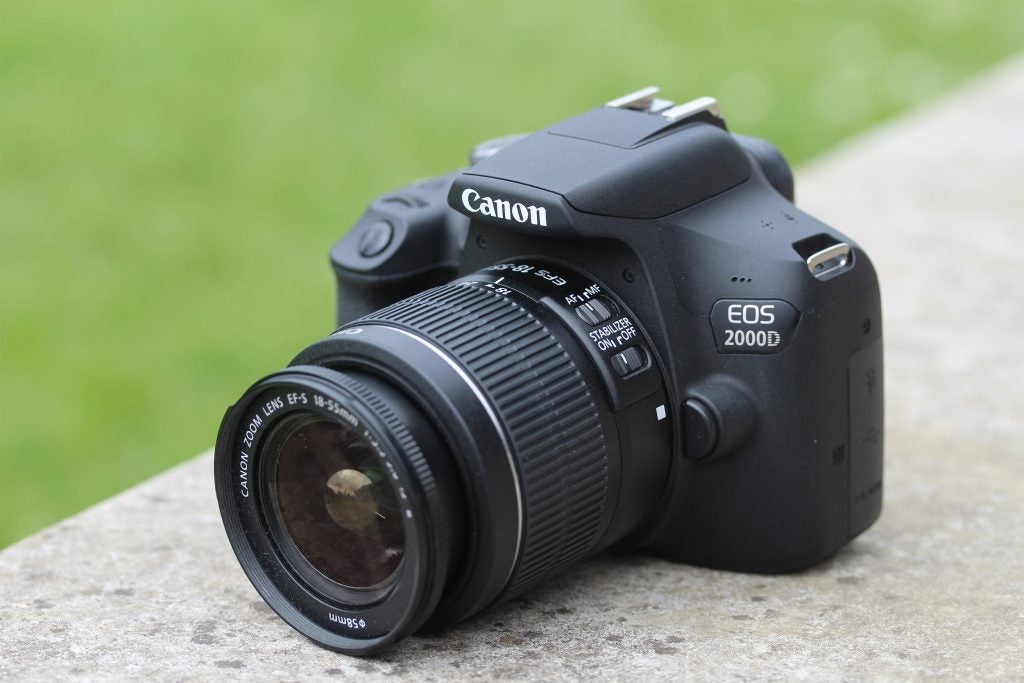
Canon chose to build down to a price rather than up to an expectation with this D3500 rival. It does the job well enough for the money, but it lacks the D3500’s specifications, lens quality and overall appeal.
Sony A6000
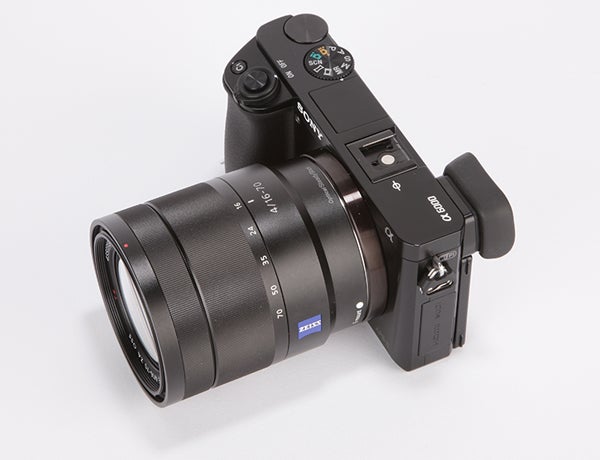
How long can Sony keep on selling the A6000? Old though it is, this is still a great compact mirrorless camera at a bargain price, though it’s not as novice-friendly as the Nikon and is aimed at more advanced users.

